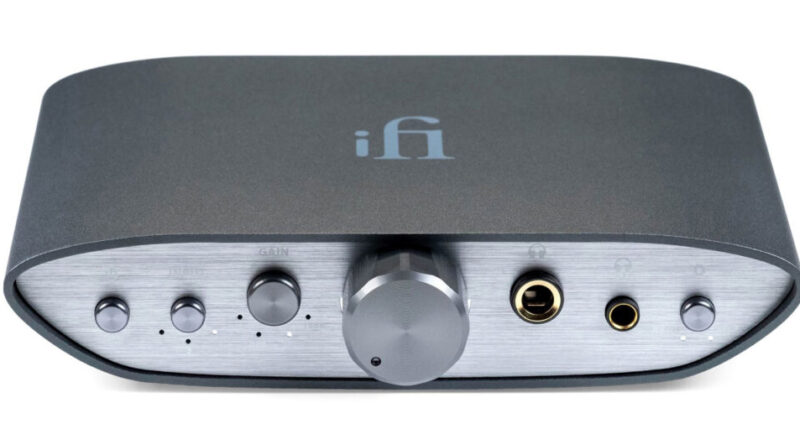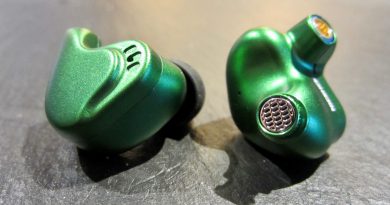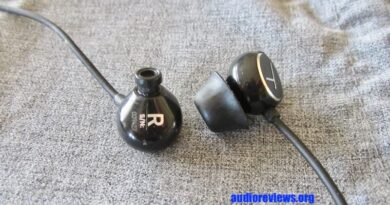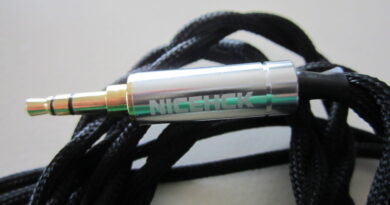Experimenting With iFi Audio ZEN CAN – Nomen Omen ?
Foreword
iFi ZEN CAN is one of those popular products for which quite a few “full reviews” have already been published – including of course one on our blog, and a good one at that! Surely, multiple points of view and opinions are very often welcome especially on an eminently YMMV hobby like ours, as no matter how objective / horizontal an assessor / reviewer tries to be, he/she will never be able to cover all aspects, and in a really neutral way either.
However repetitions and duplications may be seriously boring. Furthermore, throughly assessing an amplifier preformances requires a much deeper experience and especially a much wider and diversified equipment pool than I indeed have available.
So I felt this could be a good time to come back to the original style of my articles for once (and who knows, maybe more will follow soon). I won’t try to be horizontal, generic, nor complete. I’ll just tell you how “I” put it on trial use, for the sake of my own very partial purposes, and what opinions I developed based on that.
So let’s not call this a “review” in the first place. Chances are indeed that you might plan on needing a desktop amp for a different applicative case which I didn’t cover, and this article will have zero practical use for you. I apologise in advance. This foreword is an attempt to warn you and reduce your disappointment.
In this Article
Introduction (aka: so what am I up to?)
At home I have 2 desktop listening stations, two “stacks” as we call them, and both are centred on an Apogee Groove DAC-AMP unit.
Groove is just fantastic to me: it drives all my preferred IEMs in ways I would not have imagined 12 months ago. By comparison my QP1R DAP wins on micro dynamics and has better low extension, but Groove’s DAC job on 3D space reconstruction and its “natural” spacial instrument casting are just from another world, and its Constant Current Drive™ technology amp stage shows a no less than incredible competence in bass and highmids control, and wins big vs QP1R (and some highend Lotoos too) on musicality. I love how Groove sounds. I’ll release an article about that ReallySoonNowtm. [EDIT: here it is]
Alas nothing is perfect, and Groove is neither of course.
For one, it’s selective. It can’t drive most crossovers filters for example. That’s a technological issue with Constant Current Drive™. So no, or limited, multidriver IEM support, barred few fortunate exceptions.
Also: while overears were not part of my life till 3 months ago, I suddenly spotted an unrefusable deal on a pair of Shure SRH1540, and I blind-bought them. Yeah I know…
Well guess what: SRH1540 nominally spec at 46 Ohm 99 dB so should still be within an “easy drive” region – yet those numbers prove quite deceptive, and not uncommonly too in the world of cans. Fact is: they hit on Groove’s current delivery capacity limits, which is logical: Groove can deliver a whopping 5 V on 600 Ohm loads, but still drains 340mA only from its host, so can’t do miracles when its load requires significant amounts of current.
First time you plug SRH1540 onto a Groove you are astonished by how they sound “wonderfully well”, spaced, enormously layered, textured, smooth as butter, but then you plug them onto – say, to name quite inexpensive desktop amp option – a Liquid Spark and 1540’s (in)famous mid-bass hump gets easily out of bloated territory, and treble – which you just loved a minute before – is way more detailed and everything is just more “brilliant”. So in short: Groove alone is not enough for SRH1540 (and btw: Spark is neither, but this is another story).
Lastly, and on a wider perspective level: my recent experience (QP1R, Groove itself, Liquid Spark, and to a lower extent Sony NW-A55 DAP) confirms to me that it doesn’t necessarily take a balanced path to deliver high quality sound output. A well designed and implemented single ended path is equally good ground to build a system delivering top quality output.
So while I maintain no conceptual closure vs balanced output per se as all my other current sources are very satisfactory to me and single ended only, I currently have a sharp preference towards selecting a good single ended amp to avoid the hassle of swapping all cables, manage adapters etc etc. Things may change tomorrow of course, but that’s part of my apriori scenario for the time being.
Summarising: my existing desktop DAC-AMPs meet my satisfaction for most of my IEMs, but fall short vs just a few IEM cases (multidrivers mainly), and vs my SRH1540. Hence I need to supplement them with a different output stage. Ideally, a single-ended one. The “candidate” needs to sound at least as well as Groove – wherever that is applicable as a standalone amp, of course.
A general look at it
To begin with a very secondary if at all significant aspect, I find ZEN CAN’s aesthetics quite pleasing. I like the shape and the finish. The full metal structure is more than convincing.
Getting closer, front panel’s pushbuttons offer a nice feedback when pressed, but I just can’t approve their “wobbly” and “rattly” mount. All 4 buttons share the same “situation”, hence I must conclude these are positive design choices not defects, and I’m ready to concede they won’t affect operations. Fine. Still, may I not like that ?
The volume knob seems good: its movement offers a fluid yet reasonably solid feeling. It’s a bit too close to the 6.3 connector on its right, so when I have a single-ended load plugged in turning the volume knob is not as perfectly comfortable as I would like.
Input and output options are good. ZEN CAN accepts both single-ended (3.5 and 2xRCA) and balanced (4.4) analog inputs, and offers both single ended (6.35) and balanced (4.4) headphone output, plus a balanced (4.4) pre-amp output.
For all technical plate data please refer to ZEN CAN’s full specs here. I’ll just make some comments on the aspects I find most worth noting here.
The internal architecture is “dual mono”, fully discrete, class A. This makes ZEN CAN’s analog balanced input and outputs particularly significant as the entire setup means ZEN CAN can be plugged into an upstream full-balanced DAC to realise an end-to-end full-balanced path up to and including balanced-cabled drivers on the opposite side. I trust this is particularly appealing to die-hard balanced architecture lovers. What this also means, in iFi own words is: “Tip: As ZEN CAN is balanced, we recommend the 4.4mm output” (source: ZEN CAN product manual).
Declared output power level is “interesting”, at least on paper: 1600mW@32Ohm which become almost 1900mW@64Ohm on balanced output. And: “With 15.1v @300 Ohms on tap, it has serious power that will make even difficult-to-drive headphones thump to the beat” (source: product web page). Quite impressive data, especially at ZEN CAN’s price point. Yet, if I can read between the marketing lines I would guess that iFi is trying to tell us that ZEN CAN’s main target is amping high impedance loads. The opposite of my ones. Ah, well…
On the input side, it’s worth noting that single ended 3.5mm input only accepts up to 1.9V RMS, which means some care must be applied when the upstream DAC is connected via a 3.5 plug to avoid clipping depending on the DAC’s Line Out actual power. Indeed, considering that Groove slaps 5V endscale off its analog out, to optimise pairing and avoid having to preamp the Groove down I’ll best use 3.5-2xRCA interconnects into the ZEN CAN. Ok, check.
On ZEN CAN’s back panel a preamp-out port is available, for example to connect powered speakers downstream. Please note that such preamp line is exclusively balanced though: logical choice on one end, insofar as consequential to the internal full balanced path – yet, this might pose some compatibility restrictions. Nothing I am practically involved with though.
From the front panel it’s possible to select 4 different gain levels: 0 / 6 / 12 and 18dB. Very promising fine-tuning option, I’ll play with that.
ZEN CAN requires 5V 2.5A power. In EU, it ships bundled with iFi’s entry level iPower SMPS (5V version).
Lastly, always from the front panel it’s possible to activate/dectivate two options which are in various versions (and naming) available on other iFi devices too: XBass and 3D Matrix.
“XBass” is a shelf-style eq correction applied on the low-midbass and sub-bass. I reckon this is primarily intended if not even dedicated to openbacks, which are known to have more difficulties on delivering significant sub-bass levels. And to die-hard apriori bass lovers of course.
“3D Matrix” is a crossfeed filter (nice!).
Both features are – according to iFi’s documentation – entirely implemented in the analog domain, no DSPs are involved. Very interesting too.
Enough static descriptions, let’s proceed.
Power quality
People holding a much higher technical competence then myself affirm that “70% of an amp quality is made by its power supply quality”.
Don’t ask me if the percentage is accurate – or do, and I’ll tell you it seems a bit overkill to me – but my experience definitely confirms the statement at least in its general terms: amps are extremely sensible to power quality.
ZEN CAN makes no exception: iFi’s iPower SMPS unit (specs here) which ZEN CAN comes bundled with while not “bad” is amendable for the purpose.
I have two alternatives available at home, both offering a marked improvement. One is Allo Nirvana SMPS (specs here), another is the Power Out port on my iFi Nano iUSB3.0 power supply and USB conditioner, which is a regular element of one of my two home desktop stacks. Nano iUSB3.0 (here my article on that) is in its turn, indeed, powered by an iFi iPower (a 9V version) – so the same technology I find a bit meh when used to supply ZEN CAN directly – but its internal cleansing / conditioning features significantly improve on the upstream SMPS quality and the end result is of a totally different class.
The benefit on using either alternatives in lieu of the default iPower is quite evident: better (“neater”) imaging and separation, and an improved sense of space. The step up from iPower to Nirvana is quite obvious. iUSB3.0 represents a further, more modest yet very audible, step up from Nirvana.
It’s at this point hardly worth adding that Nano iUSB3.0 is totally overkill “just for this purpose”. Considering its not cheap price, better put it at work on its entire capacities as a USB filter, regenerator etc etc.
Bottomline: ZEN CAN’s base SMPS, while not bad per se, turns out not something to write home about when applied to this specific task. Getting a ZEN CAN means being ready to fork out another 100$ at the very least to sensibly improve on its power line.
All my experience related here below has been conducted using Nano iUSB3.0 as a PS by the way.
Driving my cans
Testing on my desktop stack #1 (PC > Nano iUSB3 > Uptone USPCB > Groove > SKW black 3.5-2xRCA ic > ZEN CAN) let’s start with Shure SRH1540.
Those are not an an easy client for any budget headphone amps.
Firstly, as mentioned above they require a lot of current, while most budget (and even not budget) headphone amps are designed to easily deliver high voltage…
Secondly, they’re very unforgiving in terms of source transparency and technicalities, unpitifully revealing goods and bads of their source for what they are.
ZEN CAN behaves in facts well with SRH1540. With gain set at 12dB biasing is OK, mid-bass comes out well controlled, unbloated, punchy, and treble is nicely sparkly. Furthermore output, with particular regards to the mids, is very nicely layered. Not only instruments are well separated, but each instrument’s sonic range enjoys a high number of sonic nuances. So far the good notes.
On the flip side, I perceive a partial lack of clarity. If instead of listening to sound I were staring at a printed picture I would be ready to bet the underlying paper stock is not pure white, rather a faint grey. It’s not a matter of noise floor, which is apparently inaudible. Indeed, I reckon this might possibly be liaised to non perfect power delivery (in spite of the external PS upgrade), or maybe too relaxed transients?
Difficult to say for me really. But the effect is there and it’s very audible, especially if I directly compare the sound swapping a Liquid Spark in. Here range is evidently more compressed (each instrument reproduces fewer sound nuances) on one end, but sound is definitely “cleaner” on the other, notes are “more crystalline”. Attacks are snappier, decays are faster, the “paper underneath” is white.
Long story short: ZEN CAN has all the juice SRH1540 requires to open up and go nicely airy and relaxed, Spark does not and makes SRH1540 sound more closed. On the other hand, ZEN CAN falls shorter on “clarity”, whatever the origin of the issue is – or maybe it’s me preferring a “neatier” presentation vs a more “liaised” one.
So do I prefer ZEN CAN or Liquid Spark? Honest: neither satisfies me 100%. If I were to decide between these 2 only I would vote for ZEN CAN though. What I ideally would like – needles to say at this point – is ZEN CAN’s subtlety and Spark’s clarity, together.
Experimenting with gain on SRH1540: if I lower it to 0dB or 6dB sound becomes dull and a bit “foggy” too. If I raise it to 18dB it all becomes even more compressed than on the Spark, while still “grey-ish”, uncrystalline. 12dB seems the best bet, the sole well sounding option in this case.
Let’s swap onto Koss KPH30i now : ZEN CAN makes them sound uncompressed, elegant, nuanced and detailed. Mids are pushed quite forward, a tad too much for my taste but that’s a minor issue.
Cycling through the 4 gain settings gets me the same final results but with wider differences compared to the SRH1540 case: 0 dB sounds dull; 6 dB exaggerates on mids push-ahead, vocals sound almost boxy; 12 dB nails it; 18 dB bloats the bass out, and compresses the range significantly.
So is ZEN CAN “very good” for KPH30i ? Yes.
How about driving planars, or high impedance cans? As I mentioned above, I got no chance to check. Refer to my co-blogger’s article here below for more experience on ZEN CAN driving different headphones.
Driving my IEMs
This is were things get odd. I ran a quite extensive panel of tests including multiple sources, and multiple IEMs.
Sources involved:
- Fiio X3 mk-3 dap
- iFi nano iDSD BL dac-amp
- Hiby R6Pro dap
- Lotoo Paw 6000 dap
- Apogee Groove dac-amp
- Questyle QP1R dap
- iBasso T3 portable amp
- Auglamour GR1 portable amp
IEMs involved:
- Final E1000, E3000 – single ended connection only
- Tin T2+, T4, final A3000, E4000, E5000, B3, Tanchjim Oxygen, Ikko OH10, Hisenior T2U, Shuoer Tape – both single and balanced-ended connection tested
Taken each source at a time, I tested how each IEM behaves once directly connected to the source, for reference, and a second time after plugging ZEN CAN in the middle. Groove was obviously left out of the a/b game on unsupported drivers. The two portable amps have been compared using Groove as a DAC.
Of course there have been variations on a case by case basis, but a few recurring effects are clearly there – sometimes stronger, sometimes less pronounced – accross all different tests, and here they are:
Whatever the input, ZEN CAN’s balanced output makes mid-bass transients significantly slower. The effect is quite macroscopic, and turns into “bloaty” midbass on all IEMs where bass transients are not apriori tuned to be particularly fast (namely E4000, E5000, B3, T2U, T2+). On punchy-style bass IEMs (Oxygen, Tape), ZEN CAN’s balanced output adds quite some decay, not enough to induce a true bloat on midbass, yet sensibly changing the driver’s tuning in that region – which is bad news anyway (why would I want my amp to make a punchy-bass IEM like OH10 into something mellow like an E4000?).
Whatever the input, ZEN CAN’s single ended output comes accross with significantly de-flated, unbodied, sometimes downright lean bass. This time it’s not a transient change, bass is not cleansed of its fat to make it punchier, it’s by and large shyer. At the same time, mids are brought evidently forward – which on most if not all drivers turns out excessive, especially in terms of highmids loss of control.
Whatever the input, ZEN CAN tames out some of the microdynamics coming from the upstream DAC. The effect is totally evident when connecting higher quality DAC sources (e.g. QP1R, LP6000, Groove, and even on Nano iDSD BL) and much less obvious if at all perceivable with lower end sources (e.g. X3 mk-3), those scarce on microdynamics in the first place. The effect is lighter (so the taming is less punishing) on ZEN CAN’s balanced output, while it’s quite dramatic when tapping onto its single ended output, which comes out dulled-off.
In the above scenario gain needs to be set at 0dB to avoid very early highmids glaring on most considered IEM models.
iEMatch to the rescue
I shared all of the above with iFi’s tech support and while they did not provide an articulated causal explanation to my case, they did send me a (single-ended) iEMatch+ sample unit to test, and check if that would improve on my experience.
This is the second time I’m auditioning an iEMatch, and this time I’ll cover it separately and in much wider detail on another article of mine coming out (yeah, you guessed it) Soontm.
iEMatch comes with a user selectable performance setting: “High” will attenuate the output by 12dB while presenting a 2.5 Ohm impedance to the load, “Ultra” will attenuate twice as much (-24 dB) while offering a 1 Ohm output impedance.
Once plugged in, iEMatch-High allowed me to raise ZEN CAN’s gain to 6dB and sometimes even dare slap it to 12dB without incurring into (or significantly delaying) the dreaded loss of high mids control on virtually all IEMs. This allowed ZEN CAN to recupe a good chunck of macrodynamics and “vividness” in the output presentation, and also microdynamics – where the source creates them in the first place of course!
Where the IEM’s own impedance prompted me to, switching iEMatch to “Ultra” position didn’t deplete the scenario, it actually improved it a further bit indeed.
So let’s make a new point of the situation (I’ll cut short on the analythical case-by-case details – yeah, you’re welcome).
ZEN CAN + iEMatch (single-ended) amps the IEMs in my batch:
- A bit to a lot better than: Fiio X3-III (single and balanced ended), iFi Nano iDSD BL, Hiby R6Pro (single-ended), iBasso T3, Auglamour GR1
- Still less well than : QST QP1R, Apogee Groove, Lotoo Paw 6000
- Roughy on par with: Hiby R6Pro (balanced)
Technically, I’ve seen much worse desktop amps!
On the other hand this result is obtained by ZEN CAN + an upgraded power supply + an iEMatch attenuator: cost starts adding up…
Balanced input
Together with ZEN CAN, iFi also sent me a sample of their 4.4-to-4.4 balanced cable to test.
The item itself presents a very convincing, high quality build.
On the applicative front, however, I can’t say I noticed its impact. I tested it with the one source (Lotoo Paw 6000) which I have available offering a balanced Line Out option, together with a single ended Line Out one. Frankly, I’ve been unable to spot any significant output sound quality difference when playing the same track from LP6000 into ZEN CAN once through a SE connection and another time through a BE one (with that cable).
Please note that this is technically totally unconclusive – a wider range of test devices would be required to form a decently grounded opinion. Sadly, I don’t have any others available.
Output “options”
As mentioned up above, ZAN CAN offers two interesting, user-selectable output “options”.
“XBass” improves bass and sub-bass at the push of a button. It’s evidently what an eq expert would call a low shelf positive filter. By ear I would say it pushes lows up by 2-3dB starting from 100Hz down (how far am I?). I reckon this is a welcome tool for openback planar lovers as it should help on their general weakness down there. On a very personal note I tend to avoid similar approaches: I rather prefer to own a careful selection of different drivers (cans, iems) each with its own original presentation and tonality, instead of modding / eqing a single one’s tonality on a case by case basis.
“3D Matrix” is a crossfeed filter, i.e. a function that allows our right ear to also hear “some” of what outputs from the earphones’ left channel, and the other way around – much like it happens when listening to louspeakers. This helps in two respects: facilitates our brain on decoding spatial cues inside the music, and makes those hard-panned tracks with (e.g.) John Coltrane doing his magic “only dead-left” of the stage sound a bit, or sometimes a lot, more natural. Within its limits (it’s not parametric, configurable etc – just a mere on/off) and situationality (effects are totally evident on some tracks, minimal on others) the trick is really nice, I like it a lot!
Both features are – according to iFi’s documentation – entirely implemented in the analog domain, no DSPs are involved. Which of course is good in terms of output accuracy.
In the end…
Mine was not going to be a comprehensive review of all possible applicative scenarios, rather oppositely a quite selfish assessment of how ZEN CAN would fare when plugged into my own scenario. Is it an upgrade to my existing gear yes or no, and how?
As I mentioned along the article, I’m certainly no amp design guru, so I can only develop impressions based on the results, without a big capacity of liaising them with possible causes. What emerges from my specific case is that iFi people were probably meaning it when they decided to call this a ZEN “CAN”: while OK on my Cans, in fact, the device struggles with any load under a bear minimum of 40-ish Ohm.
To make ZEN CAN viable for sub 32 Ohm loads – like IEMs – an “external help” is required, e.g. an iEMatch (or equivalent of course, but iEMatch works wonderfully well). Both single and balanced outputs do suffer below that threshold, in two different ways.
Performance on 45-50 Ohm loads is instead good or very good. The gear I tried ZEN CAN with is quite tricky and the device behaved in line with the top of its price class. Yes I would like “more”, but I am also aware it would cost a much prettier penny too.
Summarising:
What was indeed good for me:
- Performance on SRH1540. Probably my relative best option right now; (better?) options will likely be sensibly more expensive.
- Performance on KPH30i is very good.
- Very interesting and fun 3D Matrix option.
What was not an upgrade for me:
- Performance on IEMs when helped by iEMatch: Groove, QP1R stay better – YMMV if your current reference is from a lower tier.
- XBass option. Not a fun of that apriori.
Attention points:
- Power supply upgrade highly recommended
- iEMatch required to drive IEMs
- Not tested on planars nor high impedance magnetics
ZEN CAN and iEMatch have been provided as free of charge temporary loaner units by iFi Audio.
This article is also published on my personal audio website, here.
Our generic standard disclaimer.










